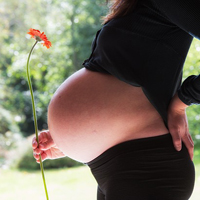 Smart Citations
Smart CitationsSee how this article has been cited at scite.ai
scite shows how a scientific paper has been cited by providing the context of the citation, a classification describing whether it supports, mentions, or contrasts the cited claim, and a label indicating in which section the citation was made.
Prevention of congenital malformations for pregnant women: A predictive model based on a study in eastern Algeria’s population
The World Health Organization (WHO) defines congenital malformation as any gross abnormality present at birth even if it is not immediately recognized. Here, we aimed to identify the factors predisposing to congenital malformations in pregnant women in Eastern Algeria and the effect of the combination of several factors. 786 pregnant women were interviewed. Throughout our study, we sought to find answers, discuss the association between malformation exposure, identify the risk factors, and predict the occurrence of malformations using statistical analysis techniques. We developed a predictive model and we found that malformations were significantly higher for pregnant women aged over 34 (10.93; 95% CI: 2.10- 201.71, p=0.023), with a BMI over 25 (2.38; 0.91-7.04, p=0.091), hypertension (2.18; 1.04-4.57, p=0.038), anemia (2.08; 0.98-4.35, p=0.053) and infections (2.32; 1.18-4.58; p=0.015). Protecting factors against malformations includes diet moderate in meat (1.97; 0.73-4.98, p=0.163) and rich in eggs, soft drinks, and fruit-vegetables (2.69; 0.76-8.63, p=0.106), (1.84; 0.74-4.43, p=0.177), (3.08; 0.56-13.28, p=0.154); respectively. Knowing risk factors helps to establish predictive models and strategies to prevent malformations and highlights the link between malformations and multiple risk factors for the sake of protecting babies’ lives.
How to Cite
PAGEPress has chosen to apply the Creative Commons Attribution NonCommercial 4.0 International License (CC BY-NC 4.0) to all manuscripts to be published.

 https://doi.org/10.4081/jbr.2021.9394
https://doi.org/10.4081/jbr.2021.9394




